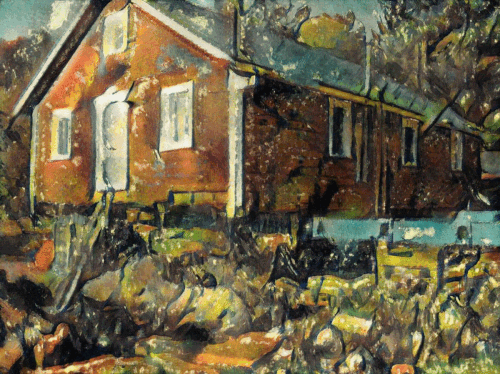Visual Synthesis and Interpretable AI with Disentangled Representations
Deep learning has significantly improved the expressiveness of representations. However, present research still fails to understand why and how they work and cannot reliably predict when they fail. Moreover, the different characteristics of our physical world are commonly intermingled, making it impossible to study them individually. We incorporate novel paradigms for disentangling multiple object characteristics and present interpretable models to translate arbitrary network representations into semantically meaningful, interpretable concepts. We also obtain disentangled generative models that explain their latent representations by synthesis while being able to alter different object characteristics individually.For other projects, see the Research Overview of the Computer Vision Group.
 |
Network-to-Network Translation with Conditional Invertible Neural Networks (2020) Given the ever-increasing computational costs of modern machine learning models, we need to find new ways to reuse such expert models and thus tap into the resources that have been invested in their creation. Recent work suggests that the power of these massive models is captured by the representations they learn. Therefore, we seek a model that can relate between different existing representations and propose to solve this task with a conditionally invertible network. This network demonstrates its capability by (i) providing generic transfer between diverse domains, (ii) enabling controlled content synthesis by allowing modification in other domains, and (iii) facilitating diagnosis of existing representations by translating them into interpretable domains such as images. Our domain transfer network can translate between fixed representations without having to learn or finetune them. This allows users to utilize various existing domain-specific expert models from the literature that had been trained with extensive computational resources. Experiments on diverse conditional image synthesis tasks, competitive image modification results and experiments on image-to-image and text-to-image generation demonstrate the generic applicability of our approach. For example, we translate between BERT and BigGAN, state-of-the-art text and image models to provide text-to-image generation, which neither of both experts can perform on their own. |
 |
Unsupervised Part Discovery by Unsupervised Disentanglement (2020) We address the problem of discovering part segmentations of articulated objects without supervision. In contrast to keypoints, part segmentations provide information about part localizations on the level of individual pixels. Capturing both locations and semantics, they are an attractive target for supervised learning approaches. However, large annotation costs limit the scalability of supervised algorithms to other object categories than humans. Unsupervised approaches potentially allow to use much more data at a lower cost. Most existing unsupervised approaches focus on learning abstract representations to be refined with supervision into the final representation. Our approach leverages a generative model consisting of two disentangled representations for an object's shape and appearance and a latent variable for the part segmentation. From a single image, the trained model infers a semantic part segmentation map. In experiments, we compare our approach to previous state-of-the-art approaches and observe significant gains in segmentation accuracy and shape consistency. Our work demonstrates the feasibility to discover semantic part segmentations without supervision. |
 |
Making Sense of CNNs: Interpreting Deep Representations & Their Invariances with INNs (2020) To tackle increasingly complex tasks, it has become an essential ability of neural networks to learn abstract representations. These task-specific representations and, particularly, the invariances they capture turn neural networks into black box models that lack interpretability. To open such a black box, it is, therefore, crucial to uncover the different semantic concepts a model has learned as well as those that it has learned to be invariant to. We present an approach based on INNs that (i) recovers the task-specific, learned invariances by disentangling the remaining factor of variation in the data and that (ii) invertibly transforms these recovered invariances combined with the model representation into an equally expressive one with accessible semantic concepts. As a consequence, neural network representations become understandable by providing the means to (i) expose their semantic meaning, (ii) semantically modify a representation, and (iii) visualize individual learned semantic concepts and invariances. Our invertible approach significantly extends the abilities to understand black box models by enabling post-hoc interpretations of state-of-the-art networks without compromising their performance. |
 |
Network Fusion for Content Creation with Conditional INNs (2020) Artificial Intelligence for Content Creation has the potential to reduce the amount of manual content creation work significantly. While automation of laborious work is welcome, it is only useful if it allows users to control aspects of the creative process when desired. Furthermore, widespread adoption of semi-automatic content creation depends on low barriers regarding the expertise, computational budget and time required to obtain results and experiment with new techniques. With state-of-the-art approaches relying on task-specific models, multi-GPU setups and weeks of training time, we must find ways to reuse and recombine them to meet these requirements. Instead of designing and training methods for controllable content creation from scratch, we thus present a method to repurpose powerful, existing models for new tasks, even though they have never been designed for them. We formulate this problem as a translation between expert models, which includes common content creation scenarios, such as text-to-image and image-to-image translation, as a special case. As this translation is ambiguous, we learn a generative model of hidden representations of one expert conditioned on hidden representations of the other expert. Working on the level of hidden representations makes optimal use of the computational effort that went into the training of the expert model to produce these efficient, low-dimensional representations. Experiments demonstrate that our approach can translate from BERT, a state-of-the-art expert for text, to BigGAN, a state-of-the-art expert for images, to enable text-to-image generation, which neither of the experts can perform on its own. Additional experiments show the wide applicability of our approach across different conditional image synthesis tasks and improvements over existing methods for image modifications. |
 |
A Disentangling Invertible Interpretation Network for Explaining Latent Representations (2020) Neural networks have greatly boosted performance in computer vision by learning powerful representations of input data. The drawback of end-to-end training for maximal overall performance are black-box models whose hidden representations are lacking interpretability: Since distributed coding is optimal for latent layers to improve their robustness, attributing meaning to parts of a hidden feature vector or to individual neurons is hindered. We formulate interpretation as a translation of hidden representations onto semantic concepts that are comprehensible to the user. The mapping between both domains has to be bijective so that semantic modifications in the target domain correctly alter the original representation. The proposed invertible interpretation network can be transparently applied on top of existing architectures with no need to modify or retrain them. Consequently, we translate an original representation to an equivalent yet interpretable one and backwards without affecting the expressiveness and performance of the original. The invertible interpretation network disentangles the hidden representation into separate, semantically meaningful concepts. Moreover, we present an efficient approach to define semantic concepts by only sketching two images and also an unsupervised strategy. Experimental evaluation demonstrates the wide applicability to interpretation of existing classification and image generation networks as well as to semantically guided image manipulation. |
 |
Content and Style Disentanglement for Artistic Style Transfer (2019) Artists rarely paint in a single style throughout their career. More often they change styles or develop variations of it. In addition, artworks in different styles and even within one style depict real content differently: while Picasso's Blue Period displays a vase in a blueish tone but as a whole, his Cubist works deconstruct the object. To produce artistically convincing stylizations, style transfer models must be able to reflect these changes and variations. Recently many works have aimed to improve the style transfer task, but neglected to address the described observations. We present a novel approach which captures particularities of style and the variations within and separates style and content. This is achieved by introducing two novel losses: a fixpoint triplet style loss to learn subtle variations within one style or between different styles and a disentanglement loss to ensure that the stylization is not conditioned on the real input photo. In addition the paper proposes various evaluation methods to measure the importance of both losses on the validity, quality and variability of final stylizations. We provide qualitative results to demonstrate the performance of our approach. |
 |
Unsupervised Robust Disentangling of Latent Characteristics for Image Synthesis (2019) Deep generative models come with the promise to learn an explainable representation for visual objects that allows image sampling, synthesis, and selective modification. The main challenge is to learn to properly model the independent latent characteristics of an object, especially its appearance and pose. We present a novel approach that learns disentangled representations of these characteristics and explains them individually. Training requires only pairs of images depicting the same object appearance, but no pose annotations. We propose an additional classifier that estimates the minimal amount of regularization required to enforce disentanglement. Thus both representations together can completely explain an image while being independent of each other. Previous methods based on adversarial approaches fail to enforce this independence, while methods based on variational approaches lead to uninformative representations. In experiments on diverse object categories, the approach successfully recombines pose and appearance to reconstruct and retarget novel synthesized images. We achieve significant improvements over state-of-the-art methods which utilize the same level of supervision, and reach performances comparable to those of pose-supervised approaches. However, we can handle the vast body of articulated object classes for which no pose models/annotations are available. |
 |
Unsupervised Part-Based Disentangling of Object Shape and Appearance (2019) Large intra-class variation is the result of changes in multiple object characteristics. Images, however, only show the superposition of different variable factors such as appearance or shape. Therefore, learning to disentangle and represent these different characteristics poses a great challenge, especially in the unsupervised case. Moreover, large object articulation calls for a flexible part-based model. We present an unsupervised approach for disentangling appearance and shape by learning parts consistently over all instances of a category. Our model for learning an object representation is trained by simultaneously exploiting invariance and equivariance constraints between synthetically transformed images. Since no part annotation or prior information on an object class is required, the approach is applicable to arbitrary classes. We evaluate our approach on a wide range of object categories and diverse tasks including pose prediction, disentangled image synthesis, and video-to-video translation. The approach outperforms the state-of-the-art on unsupervised keypoint prediction and compares favorably even against supervised approaches on the task of shape and appearance transfer. |
 |
A Variational U-Net for Conditional Appearance and Shape Generation (2018) Deep generative models have demonstrated great performance in image synthesis. However, results deteriorate in case of spatial deformations, since they generate images of objects directly, rather than modeling the intricate interplay of their inherent shape and appearance. We present a conditional U-Net for shape-guided image generation, conditioned on the output of a variational autoencoder for appearance. The approach is trained end-to-end on images, without requiring samples of the same object with varying pose or appearance. Experiments show that the model enables conditional image generation and transfer. Therefore, either shape or appearance can be retained from a query image, while freely altering the other. Moreover, appearance can be sampled due to its stochastic latent representation, while preserving shape. In quantitative and qualitative experiments on COCO, DeepFashion, shoes, Market-1501 and handbags, the approach demonstrates significant improvements over the state-of-the-art. |


